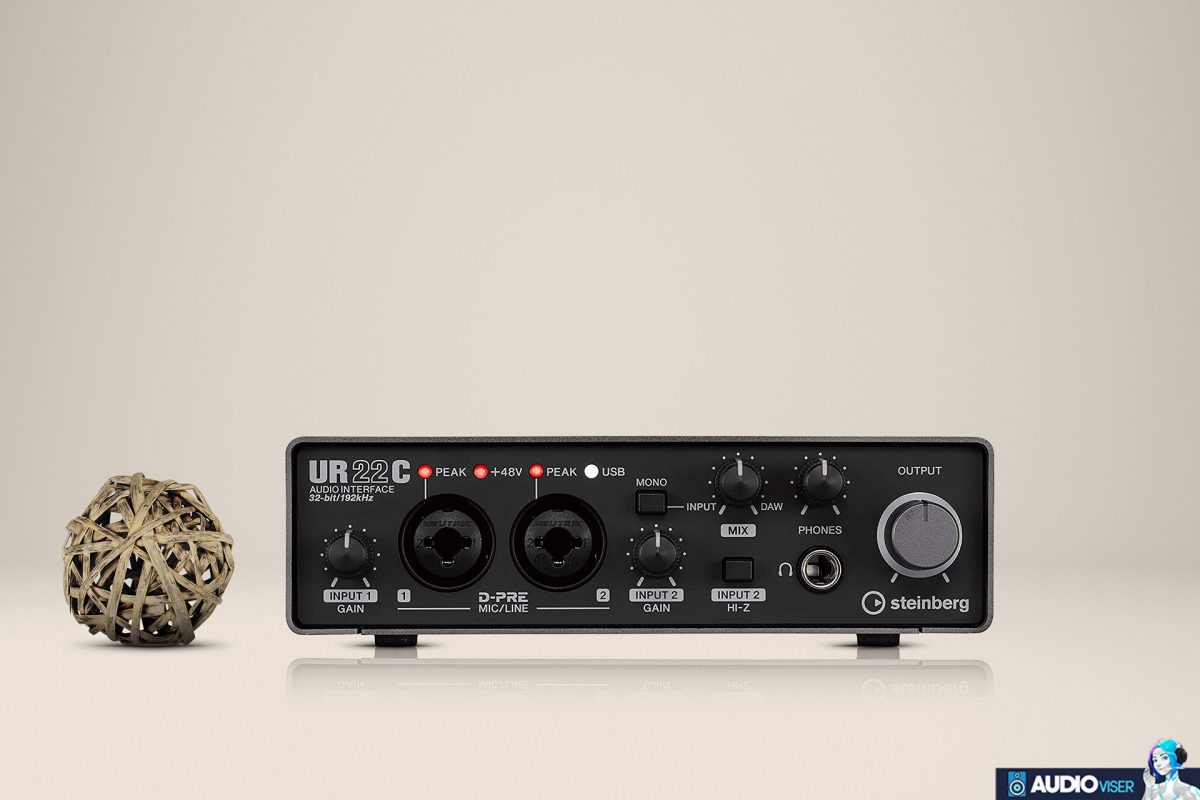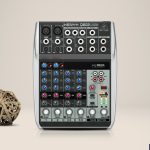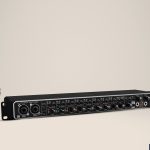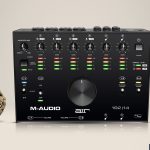
You must be familiar with Cubase if you enjoy using audio editing software.
If you’re a music producer, you might even be employing it as a go tool.
For recording, arranging, and editing music and MIDI, Steinberg created the digital audio workstation Cubase. Cubase is capable of editing and sequencing audio signals from an external sound source as well as MIDI.
Even if you are familiar with Cubase, you still need an Audio Interface to round out your knowledge of the program. However, you are a little confused and unsure of which option to make.
Do not worry because I will walk you through the best audio interfaces for Cubase in this article.
Let’s get started without wasting any time.
| Image | Product | Features | Price |
|---|---|---|---|
Best Value  | 10 | Check Latest Price | |
Best Runner Up  | 9 | Check Latest Price | |
Best Overall  | 8.5 | Check Latest Price |
Top 3 Best Audio Interface
3. M-Audio M-Track Duo – Best Value

We should be familiar with the M-Audio brand by now.
A manufacturer that operates mostly on the budget-end spectrum, but still doesn’t fail to delight many sound enthusiasts with great devices.
We know them for their speakers, but this time we will know them for their audio interface.
This M-Audio Audio Interface allows you to choose between M-Audio Duo and M-Audio Solo. The first is slightly superior to the second, as the name suggests, it is more expensive and feature-rich. Still, these are only minor differences; in general, they are nearly identical.
Unsurprisingly, these budget audio interfaces are constructed of plastic.
Although they are much lighter than more expensive interfaces with comparable functions, they are not flimsy, and they have somewhat sticky feet to help keep them firmly planted on the desk even when being moved around by cables. Although the build quality is not great, you would still say they are acceptable given the price.
Despite being a product that belongs in the cheap price range, M-Audio offers its flagship interface, which can compete with higher-end manufacturers.
Both the Solo and the Duo have two inputs. The Duo has two combi mic/line/instrument inputs and the Solo has a single mic/line combi connector, in addition to a single line/instrument jack.
The M-Track Solo and M-Track Duo are 16bit audio interfaces with a sampling rate of up to 48kHz. They provide a 20Hz to 20kHz frequency response with a 109dB signal-to-noise ratio.
The gain range for the instrument and line inputs is 10 -10dB to 44 dB, and the gain range for the microphone input is 0 to 54 dB.
Why Should You Buy It?
If you want something highly valuable and cheap you will be hard-pressed to find a better choice than this one, it’s simply hard to beat at this price point. It just ticks all the necessary points you might need from an audio interface.
2. Focusrite Scarlett Solo (3rd Gen) – Best Runner Up

The next audio interface is produced by the renowned company Focusrite.
I’ll be honest: unlike Sony and other brands, Focusrite is not a name that you hear every day; instead, professionals tend to hear it more often.
There’s a good possibility that if you’ve been recording in a studio for a while, you’ve used Focusrite equipment.
Here we have one of their best products, an audio interface that I would even dare to call one of the best on the market right now.
Due to its fiery red touch, this device will initially catch your eye. However, don’t underestimate it—it is loaded with Focusrite technology and is all about professionalism.
It is quite nicely constructed in addition to having a nice appearance. It has an all-metal construction that makes it quite robust, and the fascia is black. Everyone will undoubtedly appreciate the design work that Focusrite made here.
Additionally, because of how small it is, carrying it is not an issue.
Regarding connectivity, the front of the device has a jock socket that offers high headroom input for your guitar. a microphone XLR input, and gain control. On the rear, you will find the USB port and such.
You simply just have to plug in and play, it’s pretty straightforward with nothing complicating behind it.
With regard to performance, this bad boy will allow you to record and mix at up to 24-bit/192Khz. So your recording will keep its tone while retaining all of its sound qualities. Scarlett’s inputs offer a dynamic range of 111 dB in terms of sound levels.
You don’t have to be skeptical about its performance capabilities.
Why Should You Buy It?
This is the best remedy for the songwriters or just for those looking to record some covers. It has “that” Focusrite preamp, which has gained notoriety in the past years.
1. Steinberg UR22C – Best Overall

We have a Steinberg audio interface as our very last but most important item. No other company, besides the one that created Cubase itself, can produce a better device for Cubase, in my opinion.
With the exception of a computer, of course, Steinberg provides the UR22C in an upgraded version that comes with everything you need to start making hit tracks at home using USB-C and Cubase.
Everything you need to know about Cubase is included in the bundle that this audio interface is sold in.
Anyway, let’s go right to its design.
The UR22C is protected by a sleek black and gray aluminum enclosure that blends in with anything. It is about two inches tall and six inches wide. It is quite compact and has a minimalistic appearance, so when placed on your desk, it won’t take up any space at all.
I can’t sugar coat it, the above option from Focusrite, has a far better design, still, I can’t find anything at fault with the design of the Steinberg.
The UR22C has robust controls and inputs, which include two combos XLR/TRS (line/mic/DI) ports and one headphone jack organized with clear markings and LEDs, they are one of its standout features.
The monitor level can also be adjusted using a small rotary knob and one large output knob. You can also use the channel one and two inputs that support the DI connection, via the Lo-Z/Hi-Z switch.
It can easily cross the line into the professional territory by recording at up to 32-bit/192kHz.
The feature-rich nature of this audio interface, such as its smooth iPad integration, which enables professional music composition via your iPad, is what I enjoyed most about it.
Additionally, the loopback function makes it simple to transmit your content live on the internet, while the dspMixFx gives zero-latency monitoring.
Bluntly told, this is the ideal option for Cubase users; no one can argue with that.
Why Should You Buy It?
Being a native of Cubase is enough of a reason why you should buy this audio interface. Although the two other audio interfaces will work just well with Cubase, this one still remains superior to them. Something you should also note is that it costs more than both previous options. So, if the price is not a problem for you no one is stopping you from getting this device.
Frequently Asked Questions:
Do Audio Interfaces Enhance the Quality of sound?
Yes, it sure will do. Audio interfaces are used by professionals all over the place and they have proven that they are great devices to increase the overall sound quality. No matter the brand, an audio interface still remains an audio interface and it will do the job it is set out to do.
Are All Audio Interfaces Compatible With Cubase?
Most of them are, especially the ones that I listed above. Before listing them I made sure to do some research and see how they work when paired with Cubase, and they work great. Especially the Steinberg one due to being a native.
How do I Pick a Sound Interface?
When choosing an audio interface, there are a few things to keep in mind.
- Connectivity Format
- The number of analog ins, outs, and preamps and the onboard DSP.
- Design
- Sound quality
- Lastly, the price
Final Words
We have now reached the end of the article, and I sincerely hope that I have introduced the best audio interfaces for Cubase.
Although there are many more audio interfaces available, you will probably struggle to find any that are better than the ones mentioned above.
However, I strongly suggest you research the product prior to making a purchase. When purchasing anything like this, you want to make the right purchase so you can use it for a very long period of time.
Thank you for following along; until next time, take care.
Further Reading
If you liked what you read so far, you can continue reading some other articles regarding some amazing audio interfaces.
For example, there’s a list of the best audio interfaces for Chromebooks or the best one for Beyerdynamic DT Pro 990 Headphones.
And even the best audio interface for Audacity.
Asides from audio interfaces, there are interesting blogs like headphone burn-in/break-in or do headphones cause earwax, something even more intriguing do headphones attract lightning
This is it for today. Enjoy and Happy Reading
Composer & Audio Engineer
I’m a composer and audio engineer crafting sonic magic. Combining my skills in rhythm, harmony, and sound synthesis to create the ultimate auditory experience.





